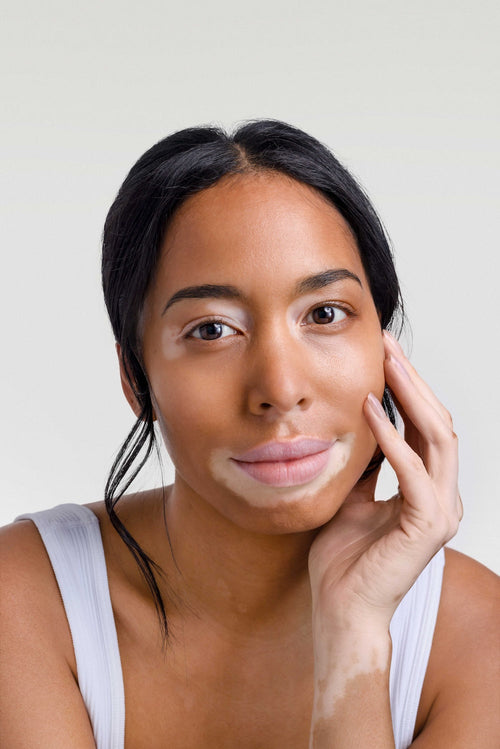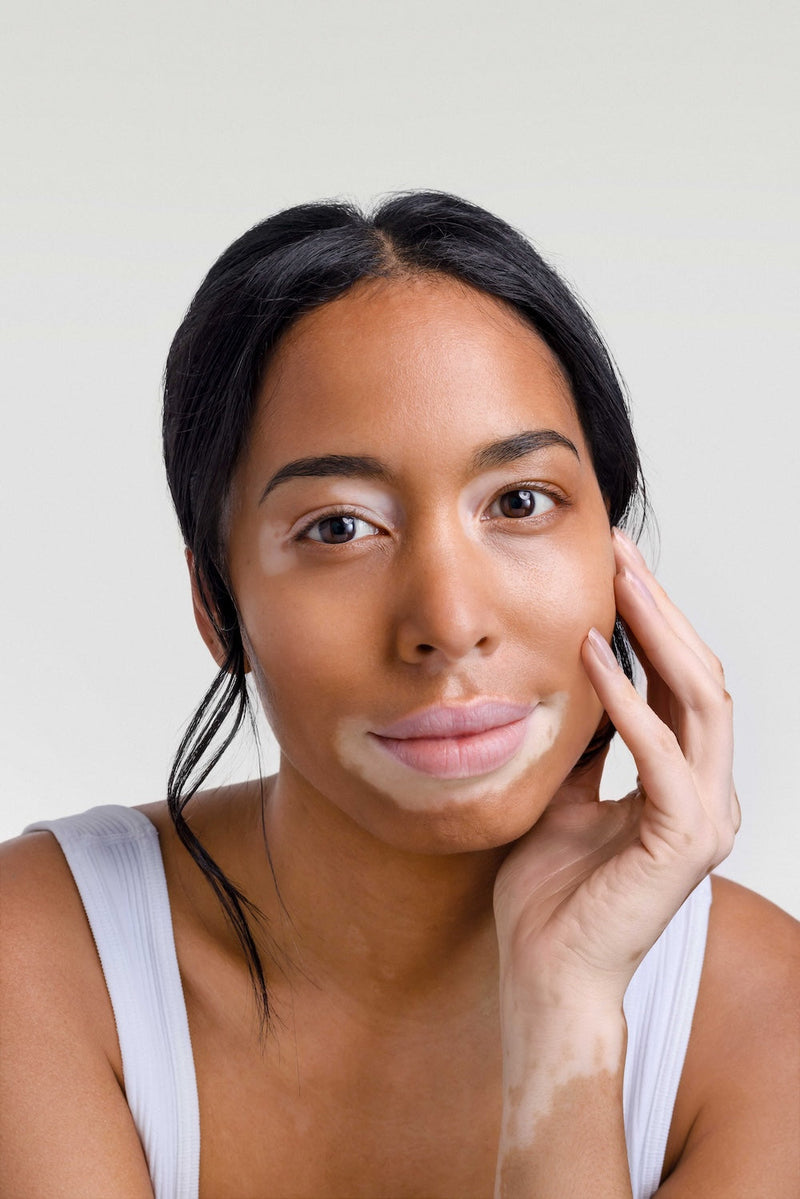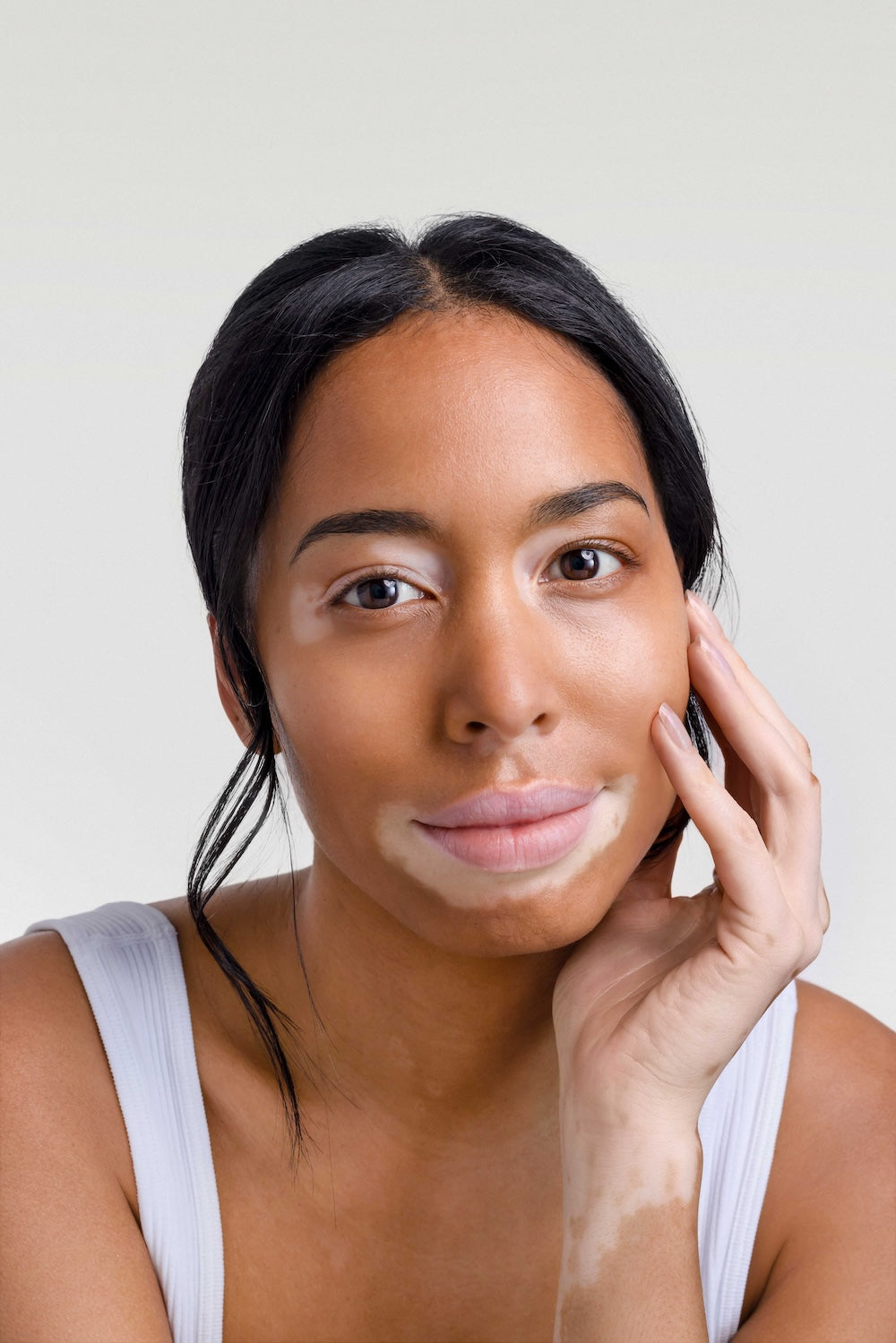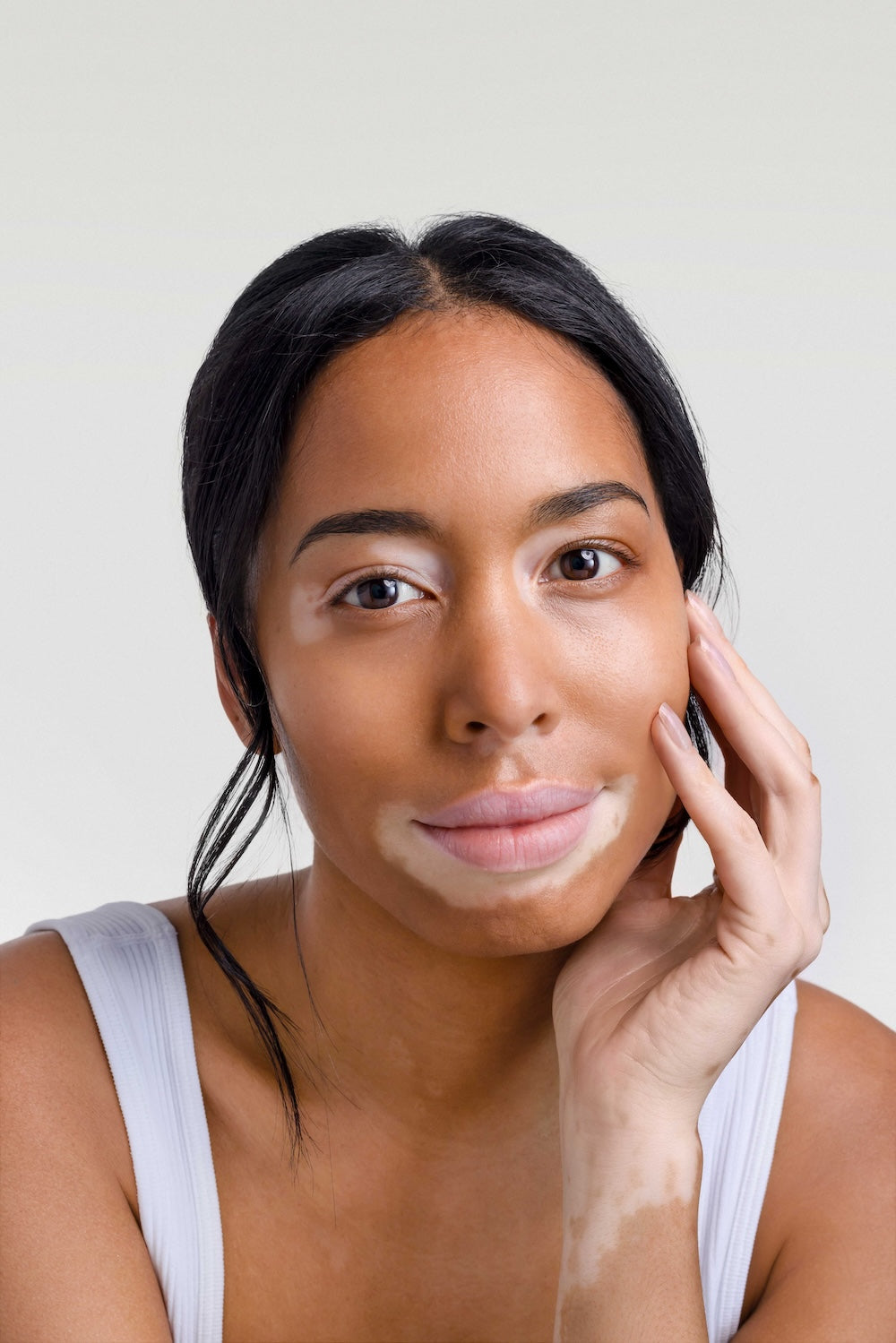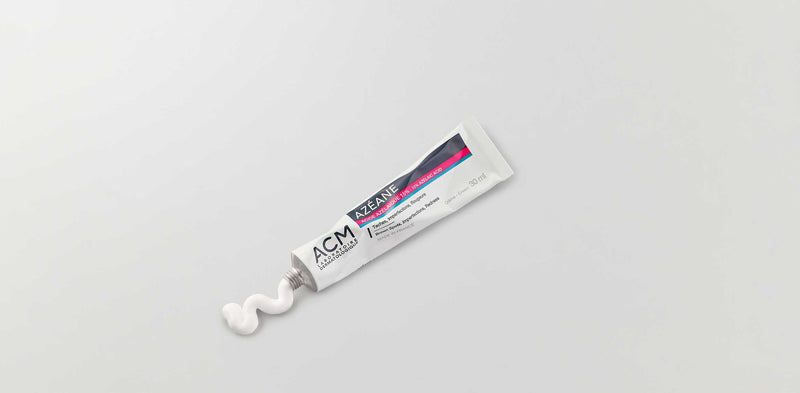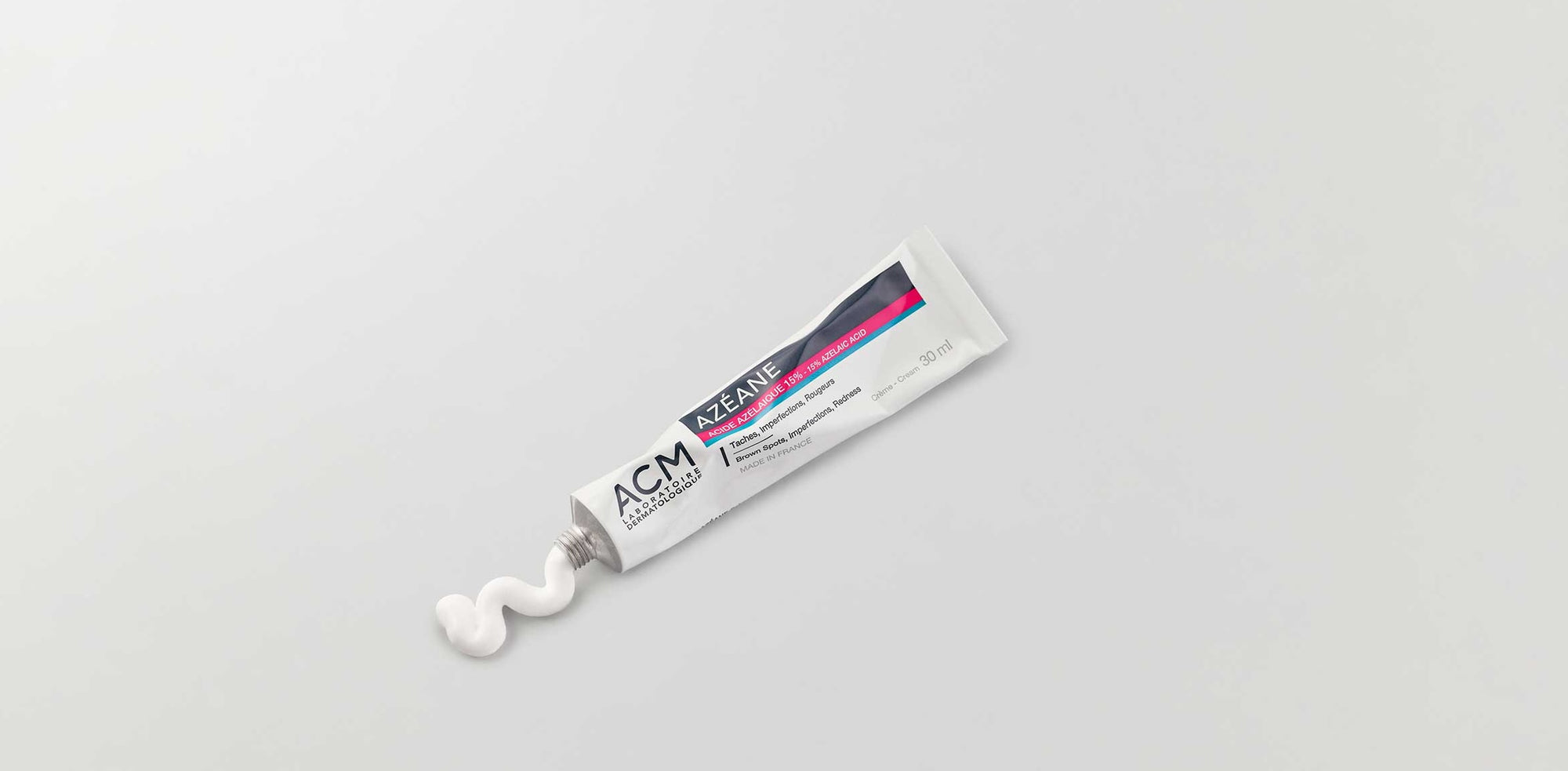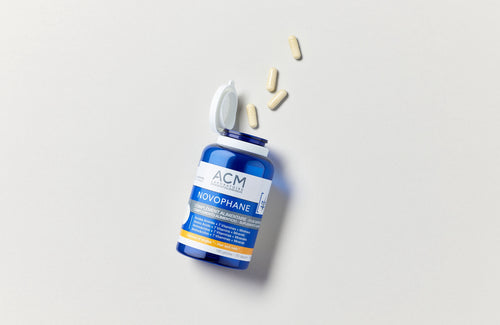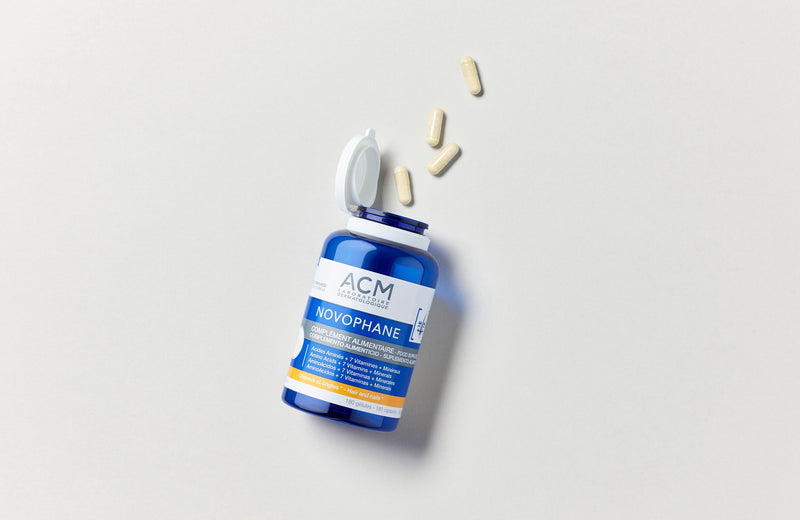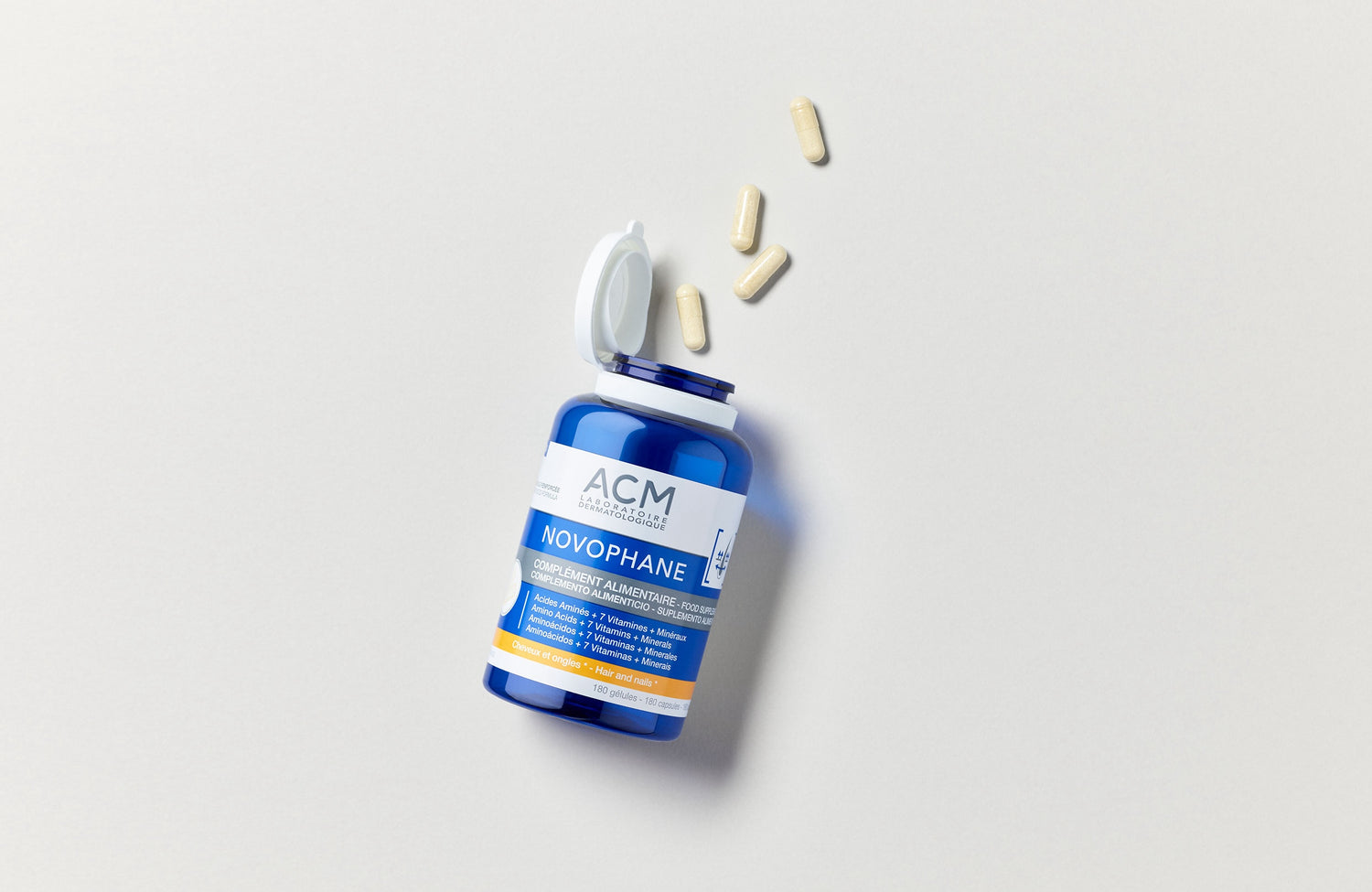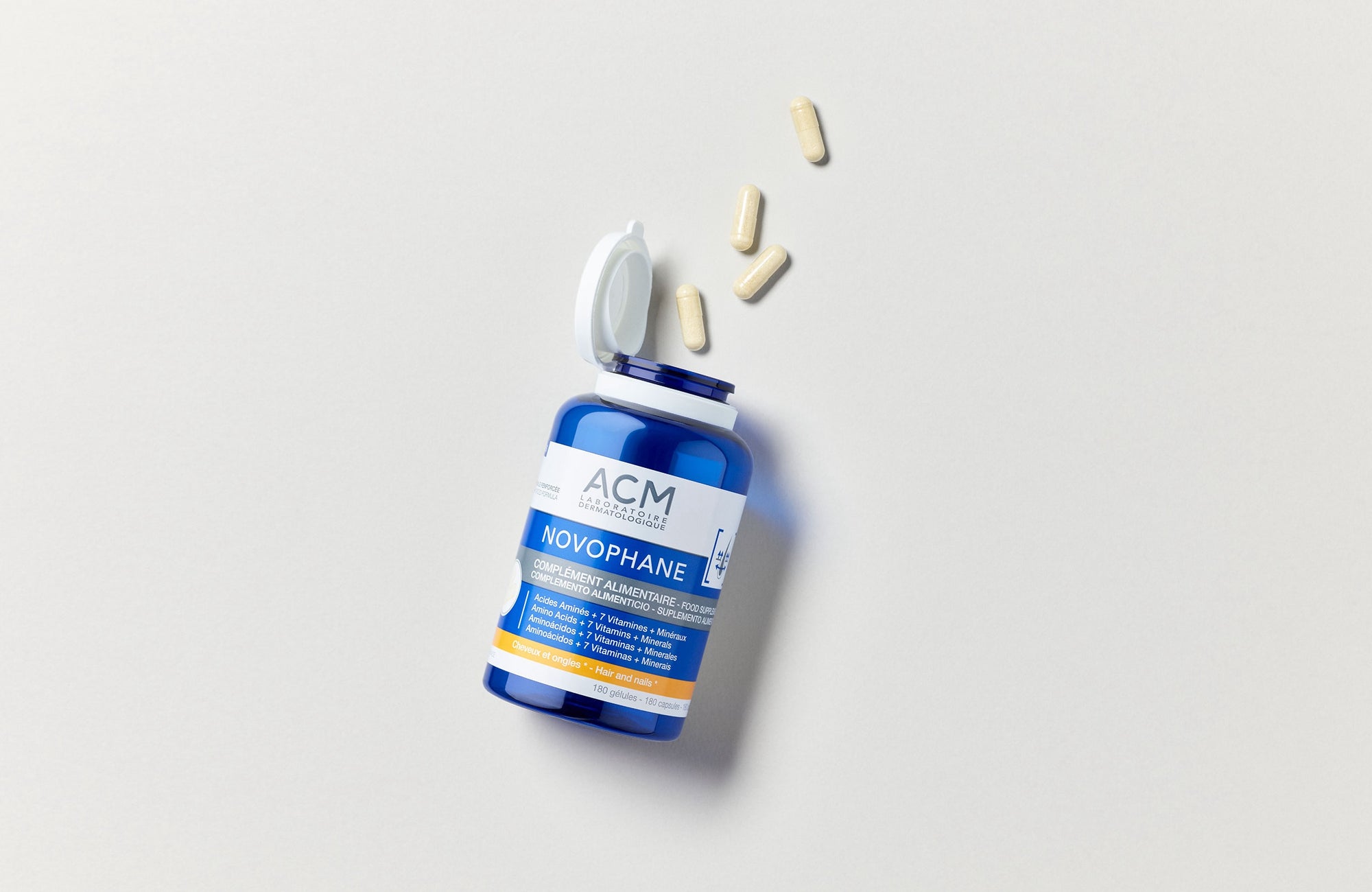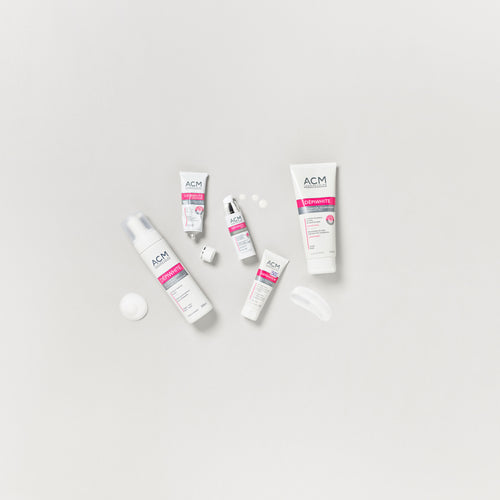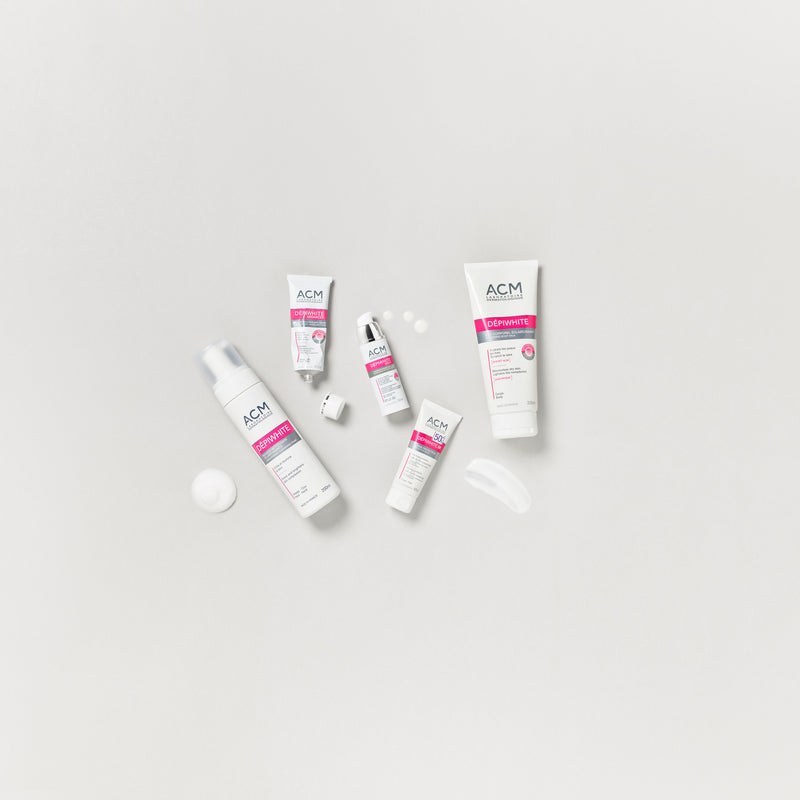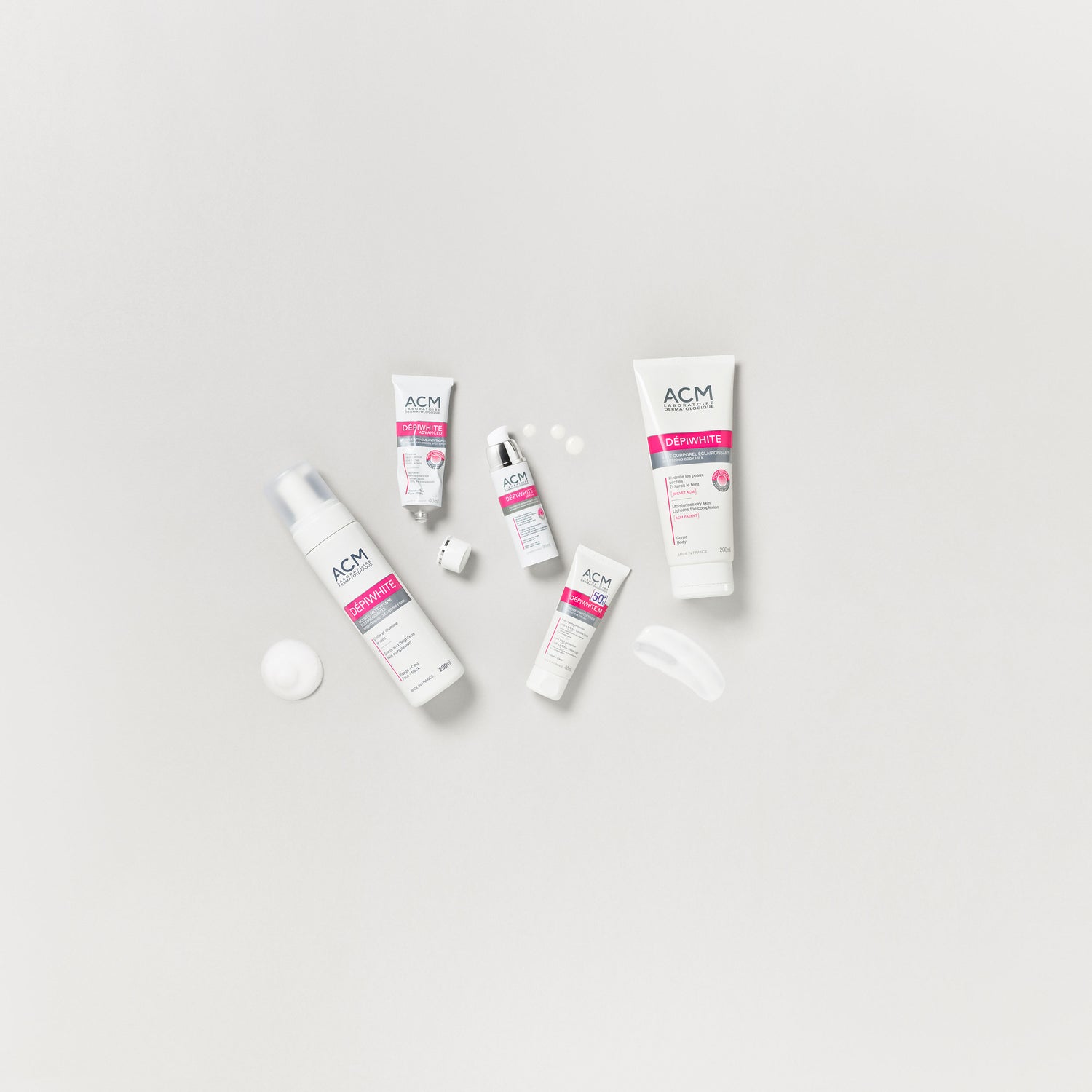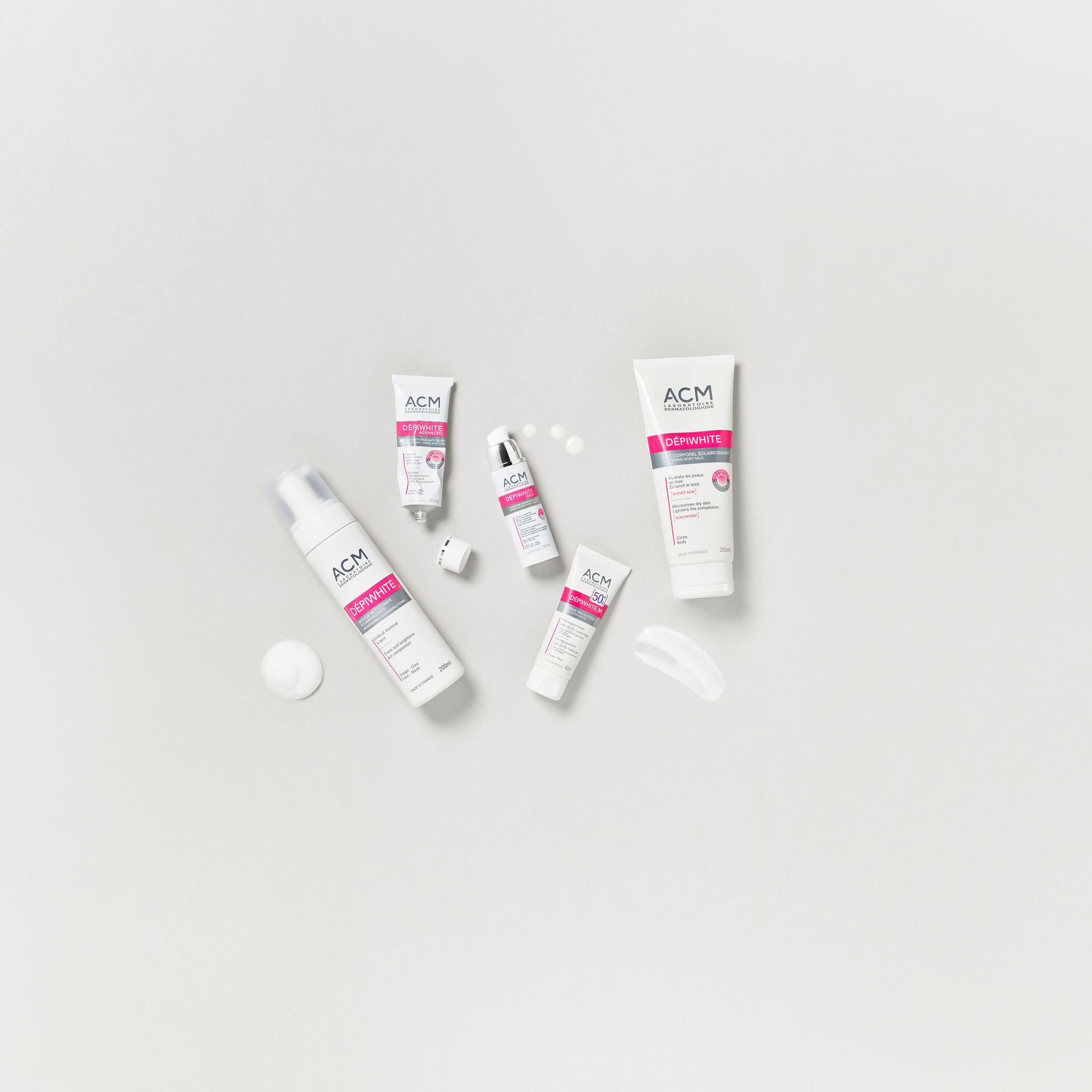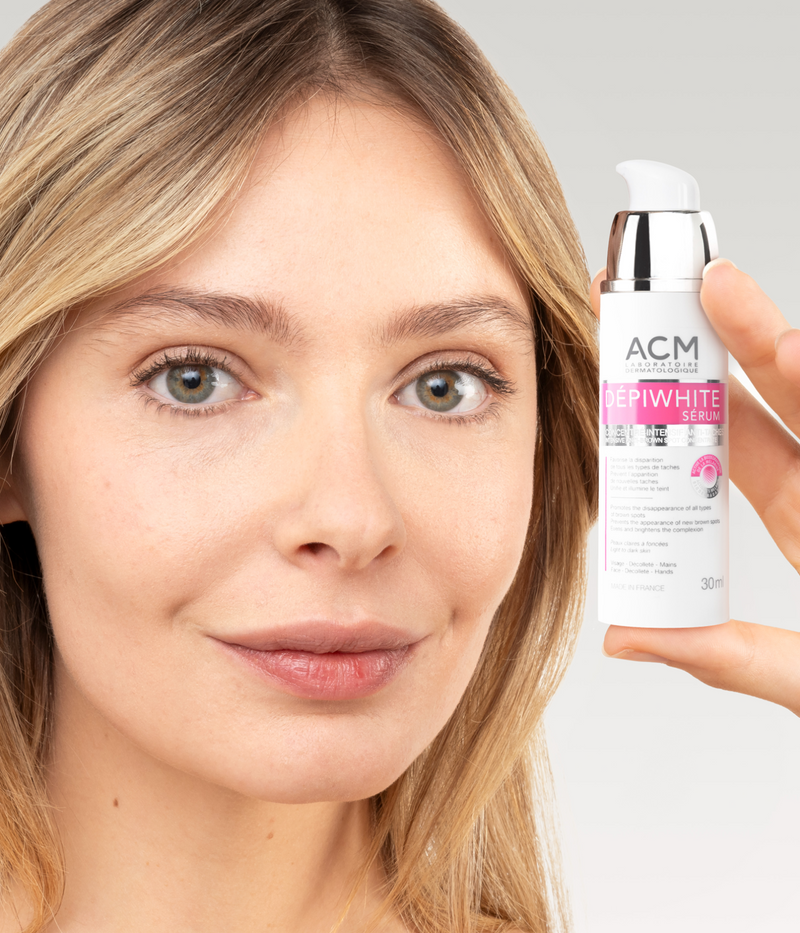What causes vitiligo?
Vitiligo is a complex disease whose origin is often multifactorial, linked to genetic and non-genetic factors. It results from a progressive disappearance of melanocytes, the cells responsible for skin pigmentation, and the cause of this disappearance is still unknown, even if different theories exist: autoimmune origin, psycho-affective origin or even the accumulation of free radicals.
LEARN MORE
According to the Inserm website, it affects between 0.5 and 1% of the world population.
Vitiligo and heredity
Although there are family predispositions (according to the French Vitiligo Association, between 30% and 35% of patients have at least one first or second degree relative affected ), vitiligo is not a hereditary disease. Parents can pass on a trait that may predispose their children to the disease, but not the disease itself.
Vitiligo and the immune system
The disappearance of melanocytes is due to an exaggerated response of the immune system. Vitiligo is therefore one of the many autoimmune diseases affecting the skin (lupus erythematosus, dermatomyositis, etc.), and it is not uncommon for it to be associated with other disorders related to immune system dysfunction (thyroid disease, rheumatoid arthritis, type 1 diabetes, alopecia areata, etc.)
Vitiligo and stress
Even if it is not the main cause, stress can promote the appearance and/or worsening of vitiligo. It can be psychological stress (emotional shock, accident, etc.), physical stress (friction, sunburn, etc.) or physiological stress (illness, surgical operation, etc.).
Vitiligo and oxidative stress
Oxidative stress plays an important role in the destruction of melanocytes (the cells responsible for skin pigmentation) and an alteration of the free radical/antioxidant balance would be a possible mechanism of vitiligo. According to several recent scientific studies (1,2 and 3) , people with this disease would, in fact, have an abnormally high quantity of free radicals which would lead to self-destruction of the cells.


What are the two forms of vitiligo?
There are two types of vitiligo: the segmental form, which affects a single area of the skin, and the generalized form, the most common, which can appear all over the body in a more or less symmetrical manner.
Segmental vitiligo
Highly localized, segmental vitiligo affects a single area, unilaterally. The face is most often affected, but the white spots can be seen on any part of the body. According to the general public website of the French Society of Dermatology, this is an aspect that is particularly observed in children , with a rapid expansion of the lesions then a sudden stop in the spread.
Generalized vitiligo
Also called "vitiligo vulgaris", generalized vitiligo can affect several areas of the body to varying extents. The patches develop bilaterally and symmetrically, and their evolution is very variable over time. The face, hands and feet are generally affected first, with the possibility of the spots spreading over the entire skin (this is called "universal vitiligo").
Three stages of progression are described for generalized vitiligo:
Stage 1: the spots are slightly pigmented with persistence of a few melanocytes in the epidermis.
Stage 2: The spots are completely discolored with black hairs.
Stage 3: the spots are completely depigmented with white hairs.
How to treat vitiligo?
Depending on the type of vitiligo, its activity and the patient's requests, the dermatologist may be required to propose different therapeutic options, to be followed alone or in conjunction, the objectives of which will be to stop the progression of the spots, induce repigmentation and prevent recurrences. Currently, there is no treatment that definitively cures vitiligo.
Local treatments for vitiligo
Topical topical corticosteroids and immunosuppressants (tacrolimus and pimercrolimus) are indicated mainly in cases of mild vitiligo. They act by reducing the activity of the immune system, which has the effect of stopping the disappearance of melanocytes, while promoting repigmentation.
To avoid the frequent side effects of dermocorticoids, which are the risks of skin atrophy and abnormal dilation of small vessels (telangiectasias), they are prescribed for a fairly short period of time, and only to treat small lesions.
Narrow spectrum UVB phototherapy
Narrow-spectrum UVB phototherapy is now the treatment of choice for generalized vitiligo. Performed in a medical office, this therapy induces local immunosuppression and stimulates melanin production, at a rate of two to three sessions per week for several months.
PUVA therapy
PUVA therapy combines the oral intake of psoralens, substances that stimulate the formation of melanin under the action of light, and type A ultraviolet rays (UVA). It is prescribed less and less because of its many side effects (burns, itching, dry skin, nausea, etc.) but it can be recommended by the dermatologist in the event of an unsatisfactory response to straight-spectrum UVB phototherapy.
Antioxidants
In addition to phototherapy, oral and topical antioxidants, by fighting oxidative stress, can prevent the progression of vitiligo, slow its development and help achieve satisfactory repigmentation.
Surgical treatments for vitiligo
For localized vitiligo, stable for several years and which does not respond to other therapeutic options, it is possible to resort to surgical treatment in the form of tissue or cell grafts. There are different techniques (blister roof transfer, melanocyte grafts, ultrathin skin grafts, etc.) and the results can vary from one individual to another, with more or less satisfaction.
The depigmenting laser
In the case of vitiligo universalis affecting almost the entire body, and when repigmentation therapies have not worked, laser depigmentation of healthy areas may be suggested in order to regain a uniform appearance. Due to its definitive nature (melanocytes are destroyed), this solution requires careful consideration. Since depigmented skin is much more sensitive to the sun, a protection routine (clothing, sunscreens, time and duration of exposure, etc.) must be put in place to prevent sunburn and the risk of skin cancer.
How to camouflage vitiligo?
In addition to medical treatment to stop the progression of vitiligo and induce repigmentation, more or less long-term camouflage techniques can be used to improve the quality of life of patients.
Makeup to hide vitiligo
High-coverage foundations can temporarily correct vitiligo. Applied to the face, neck, and décolleté, they help restore a more even complexion thanks to formulas rich in pigments that are usually water and sweat resistant. For small lesions, a concealer applied locally may be enough to even out the skin color, but for more extensive forms of vitiligo, a concealer applied all over the face will be more suitable.
Self-tanner to conceal vitiligo
Self-tanning creams and lotions can help to temporarily color depigmented skin areas, with a result that is water-resistant and can last for several days. The most commonly used molecules are dihydroxyacetone (DHA) and erythrulose, which react with the amino acids in epidermal cells to develop a color of varying shade and intensity. This is a technique appreciated by light phototypes, even if it requires a certain dexterity because only the lesions must be targeted.
